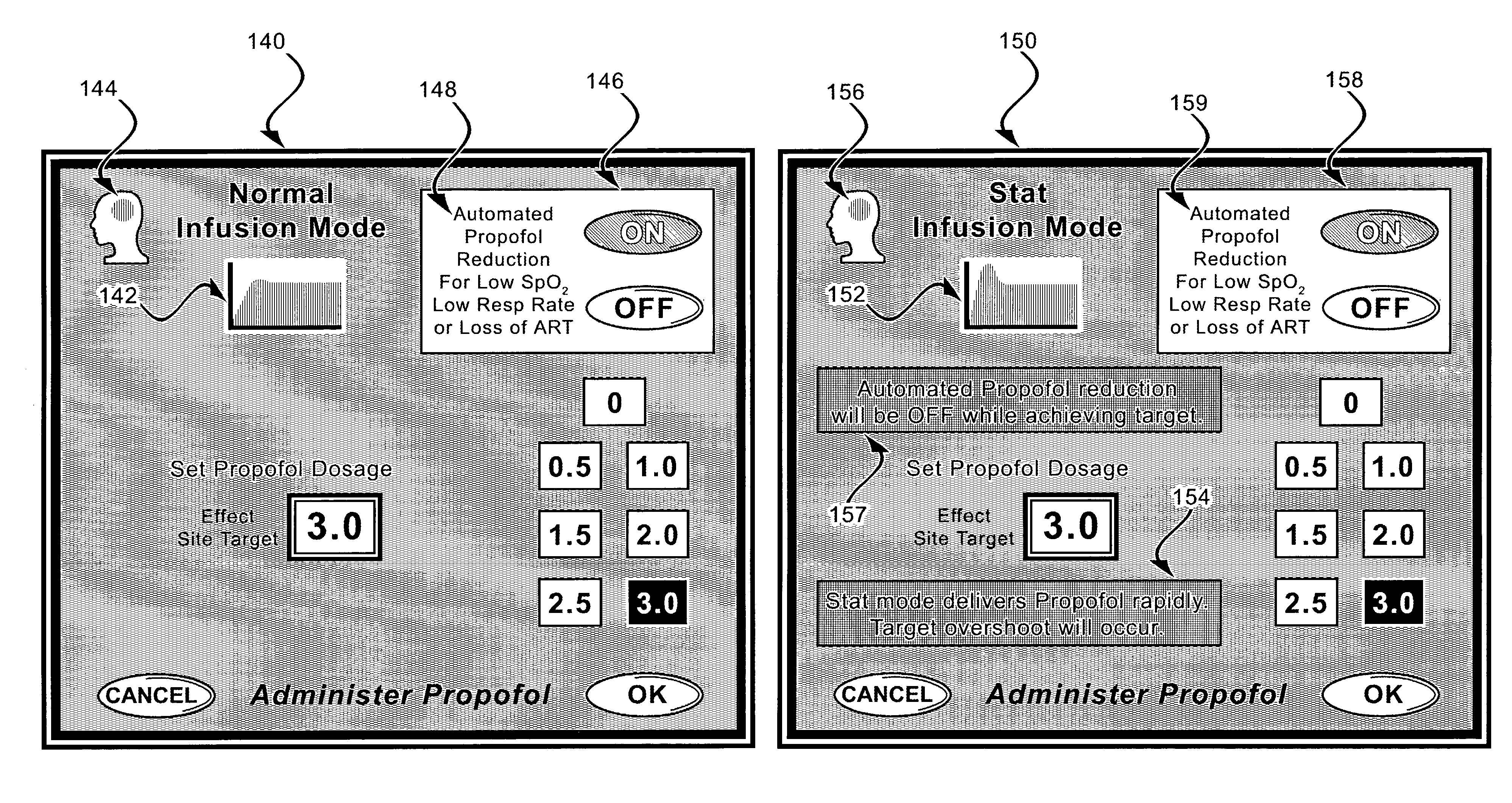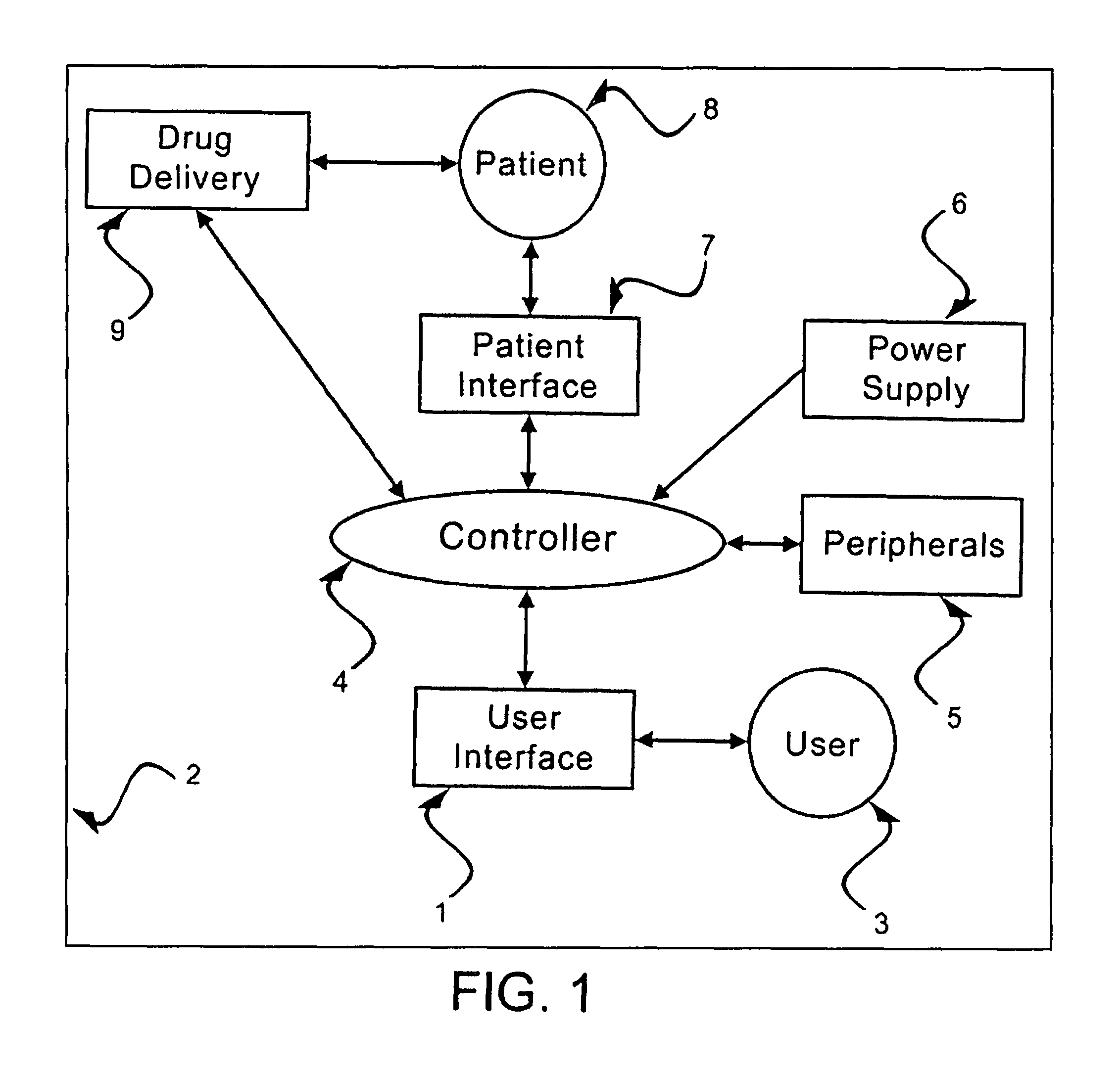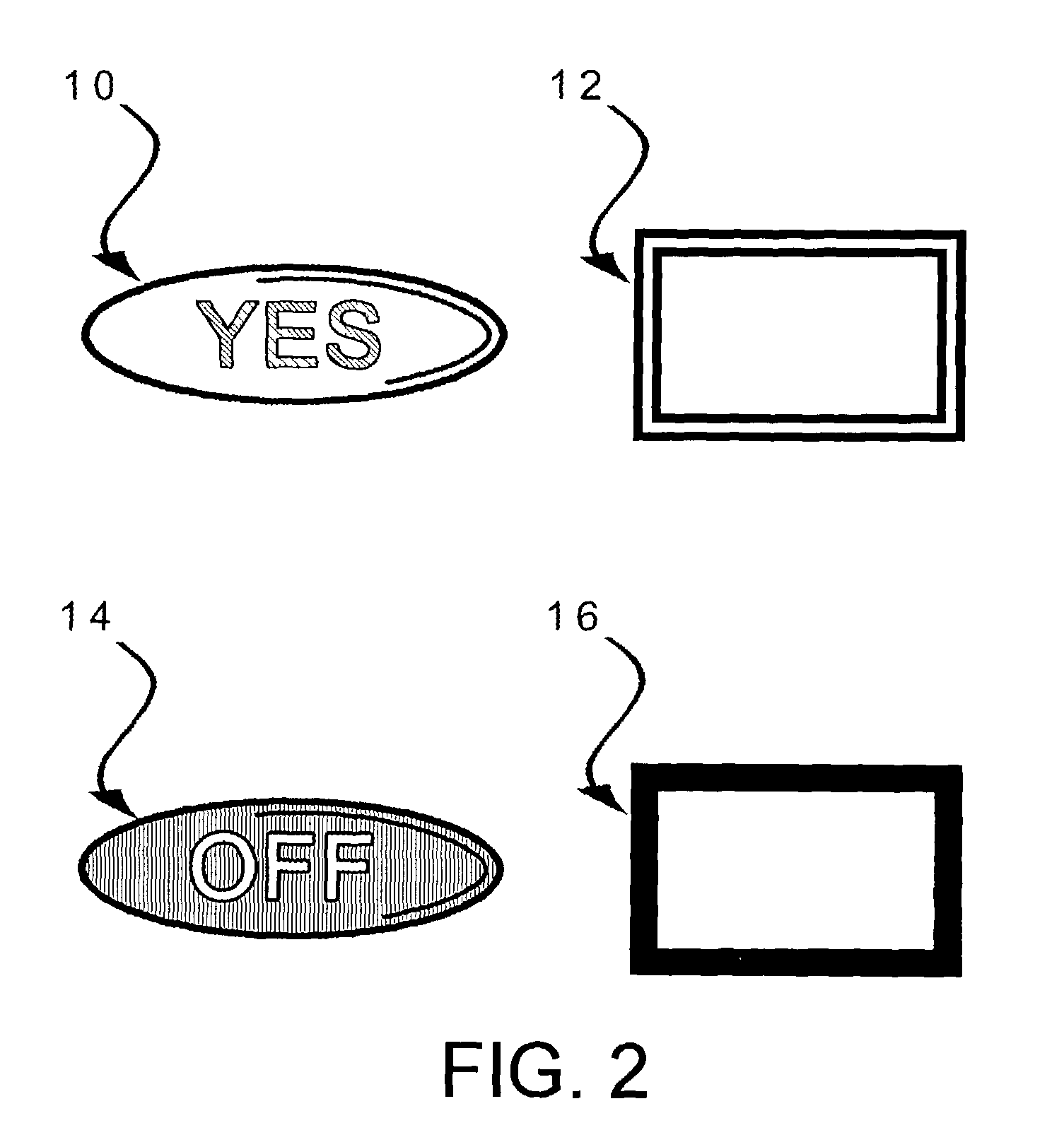User interface for sedation and analgesia delivery systems and methods
a user interface and analgesia technology, applied in the field of medical device control, can solve the problems of clinicians not having time or patience, many medical devices fail to achieve the pragmatic, real-world definition of intuitiveness and usability, and clinicians may not have time or patien
- Summary
- Abstract
- Description
- Claims
- Application Information
AI Technical Summary
Benefits of technology
Problems solved by technology
Method used
Image
Examples
Embodiment Construction
[0060]A user interface (UI) is described herein that may be functionally integrated with a sedation and analgesia delivery system. An example of such a sedation and analgesia delivery system is described in U.S. patent application Ser. No. 09 / 324,759, filed Jun. 3, 1999 and incorporated herein by reference in its entirety.
[0061]The sedation and analgesia system of application Ser. No. 09 / 324,759 includes a patient health monitor device adapted so as to be coupled to a patient and generate a signal reflecting at least one physiological condition of the patient, a drug delivery controller supplying one or more drugs to the patient, a memory device storing a safety data set reflecting safe and undesirable parameters of at least one monitored patient physiological condition, and an electronic controller interconnected between the patient health monitor, the drug delivery controller, and the memory device storing the safety data set; wherein said electronic controller receives said signa...
PUM
 Login to View More
Login to View More Abstract
Description
Claims
Application Information
 Login to View More
Login to View More - R&D
- Intellectual Property
- Life Sciences
- Materials
- Tech Scout
- Unparalleled Data Quality
- Higher Quality Content
- 60% Fewer Hallucinations
Browse by: Latest US Patents, China's latest patents, Technical Efficacy Thesaurus, Application Domain, Technology Topic, Popular Technical Reports.
© 2025 PatSnap. All rights reserved.Legal|Privacy policy|Modern Slavery Act Transparency Statement|Sitemap|About US| Contact US: help@patsnap.com



